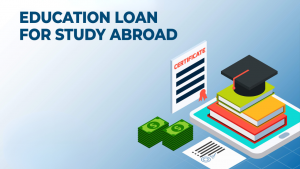


Abroad Education Loan Repayment
Planning how to pay back your student loan is really important for managing your money well and making sure you can pay it off without stress. Whether you got a loan for studying abroad or for higher education in your own country, knowing how to handle this financial responsibility can make things easier for you. In this guide, we’re going to share some expert advice on how to plan for paying back your loan. We’ll look at different ways you can pay it back, how to manage your loan smartly, and how to make choices that help you pay it back more comfortably. We’ll talk about everything you need to know, like how long you have to pay back the loan, understanding interest rates, getting help from subsidies, and taking advantage of tax benefits. This will help you make a plan for paying back your loan that fits your budget and plans.Repayment Procedure of Different Types of Lenders
When you take out a student loan, you get what’s called a “moratorium period.” This means you don’t have to start paying back the loan right away. It’s the time from when your course finishes to when you start working. It is not necessary that you get the moratorium period absolutely free but depending on the type of lender that you have opted for you need to pay either simple interest (SI) or partial simple interest (PSI).| Lender Type | Moratorium Period | Payment During Moratorium |
| Public Bank | Course + 6 months | Nil |
| Private Bank | Course + 6 months | SI |
| NBFCs | Course + 12 months | SI / PSI / Immediate EMI |
| International Lenders | Course + 12 months | SI |
Repayment During Moratorium Period
Making payments towards your education loan during the moratorium, which could be simple interest, partial simple interest, or EMI, greatly affects the total cost of your loan. For example, on a loan of ₹5,00,000 with an annual interest rate of 10% and a 12-month moratorium, if you choose to pay the simple interest monthly, which works out to about ₹4,167 (₹5,00,000 x 10% ÷ 12), you can avoid adding the interest to the loan’s principal during this break. This strategy not only prevents your loan amount from growing but also ensures you end up paying much less in total interest over the duration of the loan. For instance, if no payments were made during the moratorium, the total amount owed by the end of the loan’s term could be much higher due to the interest compounding on the new, larger principal. Therefore, making payments during the moratorium can lead to substantial long-term savings and lessen the financial burden after your study period.What Happens if You Fail to Repay Education Loan?
The possibility of an education loan turning into a Non-Performing Asset (NPA) exists. An NPA occurs when the borrower has not made any payments towards the loan’s principal and interest within the repayment timeframe. Not being able to pay off an education loan on time can lead to several negative outcomes, such as:- Missing your EMI payments for three consecutive months will result in the bank marking your loan as an NPA.
- The assets you put up as collateral for the loan are in jeopardy. The bank can take these assets to cover the unpaid loan amount.
- Once your loan is deemed an NPA, it negatively impacts the credit scores of both the borrower and any co-signers. This makes it harder for you and your co-signer to secure loans in the future.

Strategies Related to Education Loan Repayment
There are some strategies that you can utilize to save some amount and make your repayment easy. These strategies are –- Explore subsidies: Take advantage of government subsidies, including those for margin money, reduced interest rates for female borrowers, Rinn Raksha scheme benefits, and special offers for students with disabilities or those from economically weaker backgrounds.
- Disburse loans in phases: Rather than receiving the entire loan amount at once, opt for phased disbursements. Interest accumulates based on the disbursed amount, not the total sanctioned loan, which can lower overall interest costs.
- Choose fixed interest rates: Understanding how interest rates influence your repayments is crucial. Fixed rates offer predictability over floating rates, which can vary and affect your monthly payments. If you’ve chosen a floating rate, stay informed about potential rate changes to plan accordingly.
- Refinance if advantageous: After securing employment, consider refinancing your loan to benefit from lower interest rates offered by other lenders due to your improved financial profile, reducing your monthly payment obligations.
- Utilize tax deductions: The Income Tax Act’s Section 80E allows for deductions on the interest paid on education loans for higher studies abroad, potentially lowering your taxable income.
- Early loan repayment: Foreclosing your loan by repaying the full outstanding balance ahead of schedule can be a smart financial move. This can be initiated by the borrower to avoid further interest accumulation or by the lender in cases of default.


